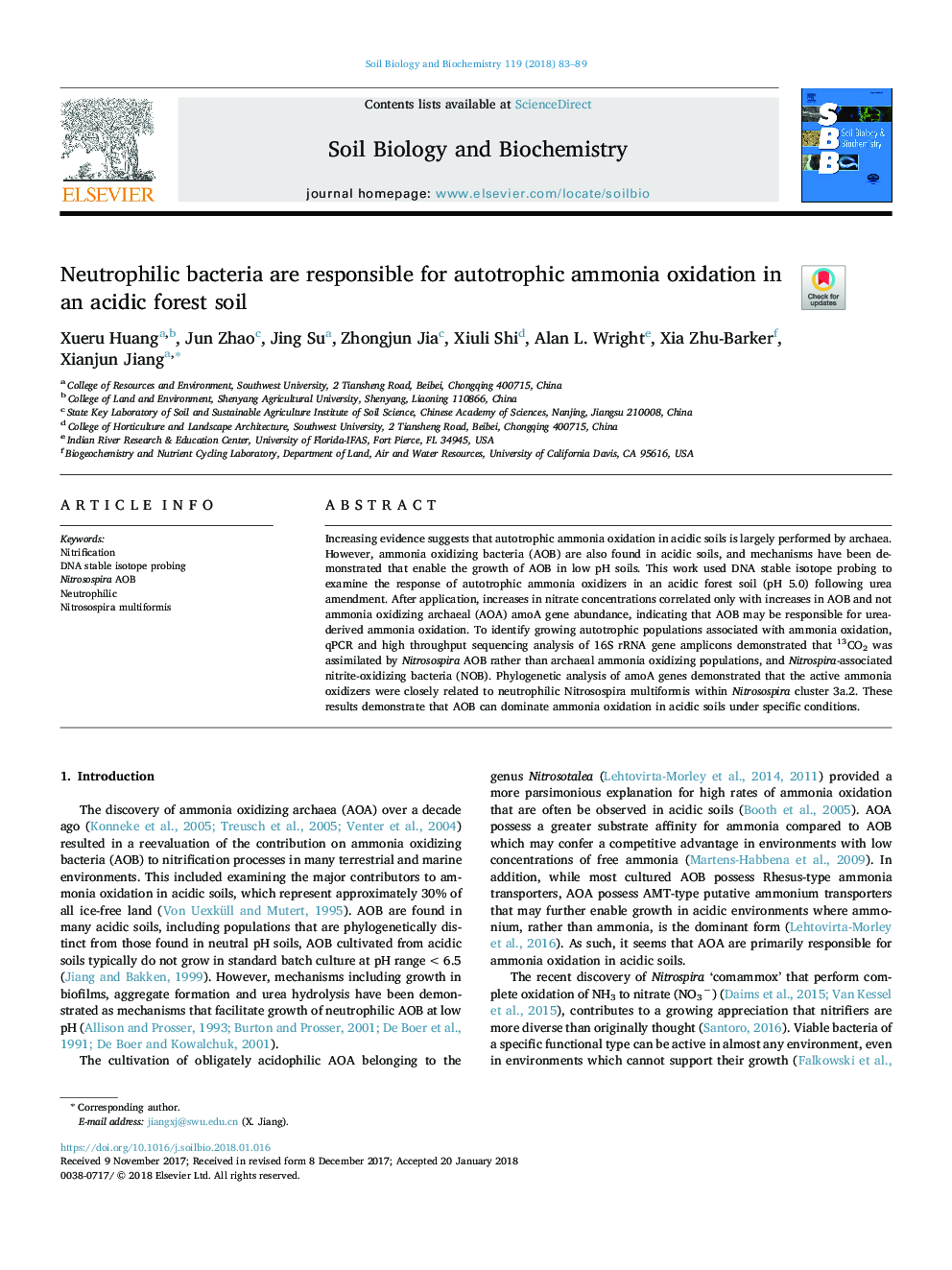| Article ID | Journal | Published Year | Pages | File Type |
|---|---|---|---|---|
| 8362886 | Soil Biology and Biochemistry | 2018 | 7 Pages |
Abstract
Increasing evidence suggests that autotrophic ammonia oxidation in acidic soils is largely performed by archaea. However, ammonia oxidizing bacteria (AOB) are also found in acidic soils, and mechanisms have been demonstrated that enable the growth of AOB in low pH soils. This work used DNA stable isotope probing to examine the response of autotrophic ammonia oxidizers in an acidic forest soil (pH 5.0) following urea amendment. After application, increases in nitrate concentrations correlated only with increases in AOB and not ammonia oxidizing archaeal (AOA) amoA gene abundance, indicating that AOB may be responsible for urea-derived ammonia oxidation. To identify growing autotrophic populations associated with ammonia oxidation, qPCR and high throughput sequencing analysis of 16S rRNA gene amplicons demonstrated that 13CO2 was assimilated by Nitrosospira AOB rather than archaeal ammonia oxidizing populations, and Nitrospira-associated nitrite-oxidizing bacteria (NOB). Phylogenetic analysis of amoA genes demonstrated that the active ammonia oxidizers were closely related to neutrophilic Nitrosospira multiformis within Nitrosospira cluster 3a.2. These results demonstrate that AOB can dominate ammonia oxidation in acidic soils under specific conditions.
Keywords
Related Topics
Life Sciences
Agricultural and Biological Sciences
Soil Science
Authors
Xueru Huang, Jun Zhao, Jing Su, Zhongjun Jia, Xiuli Shi, Alan L. Wright, Xia Zhu-Barker, Xianjun Jiang,
